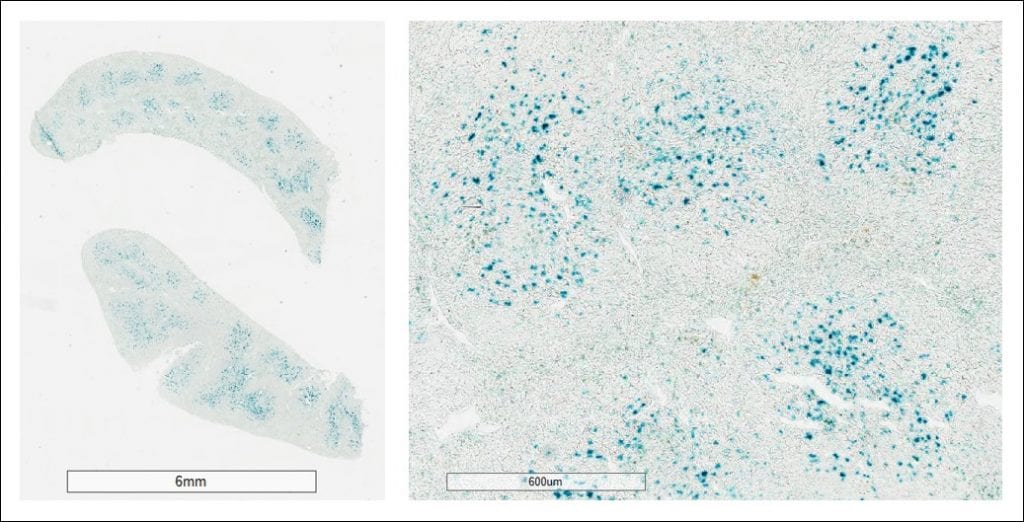B22: LCK-optoα1AR-IRES-lacZ Strain Information Sheet
Strain Name:
Common Name: LCK-optoα1AR-IRES-lacZ
CHROMusTM designation and lines available: R24:B22
Jackson Stock number: JAX# 033705
Development: The rhodopsin based effector, optoα1AR which on activation generates the second messenger diacylglycerol/IP3, was inserted at the ATG site of the LCK (lymphocyte-specific protein tyrosine kinase) gene in the BAC RP24-159E19 (CHORI) through homologous recombination. The resulting recombinant BAC was injected into the male pronucleus of fertilized oocytes which were then implanted into pseudo pregnant females. Resulting offspring were screened for the presence of the transgene (founders). Colonies were established from each founder and tested for expression.
Transgenic Numbers:
| # pups born | # founders | # expressors |
| 18 | 4 | 1 |
Description: The rhodopsin based effector, optoα1AR is expressed under control of the LCK promoter, directing expression to T cells. Expression is observed in spleen. An internal ribosome entry site (IRES) allows for co-expression of lacZ as a visual indicator of expression patterns. This mouse is useful for activating second messengers in T cells.
Phenotypic Data:
NOTE: Functional analysis is ongoing. LacZ staining of the spleen shows appropriate expression patterns.

Expression of lacZ in T cells in the spleen as directed by the LCK promoter.
Genotyping Protocol:
| Primer B101 | GGGTTGGTCCCGCTATATTC |
| Primer B102 | GAAGGCAGGGATGGTCATAAA |
| Expected size of product: | 478bp |
Cycling conditions:
|
PCR results:
|
Terms of Use: Please contact chromus@cornell.edu for information on MTA and fees.
So as to appropriately acknowledge and credit the scientists who have produced the LCK-optoα1AR-IRES-lacZ mouse strain, it is expected that you will include these individuals in any publication that is submitted prior to the initial publication of this line from the Kotlikoff laboratory.
Acknowledgement: Please inform us of any publications resulting from the use of this mouse and use the following statement to acknowledge their development:
The mouse strain LCK-optoα1AR-IRES-lacZ was developed by CHROMusTM which is supported by the National Heart Lung Blood Institute of the National Institute of Health under award number R24HL120847.

